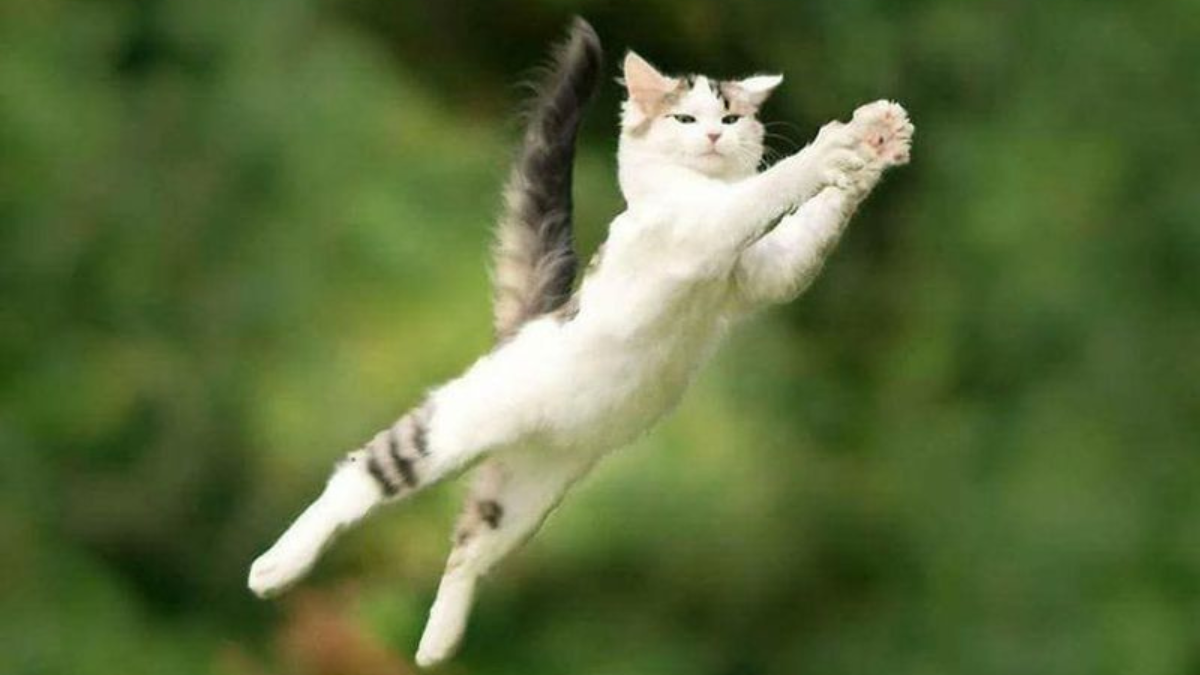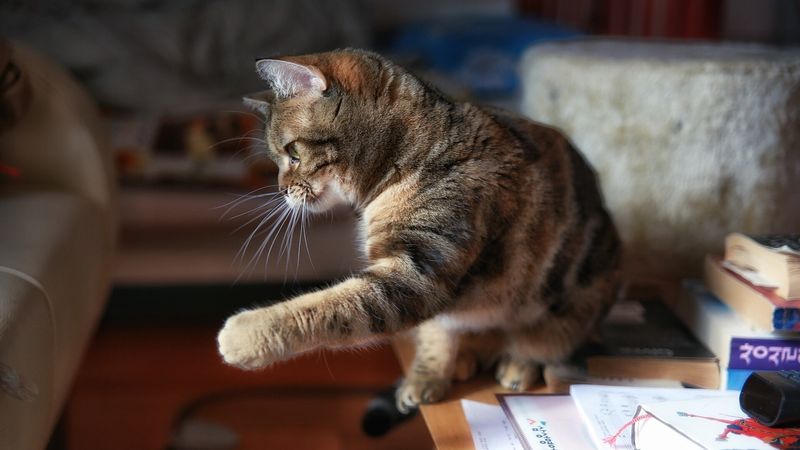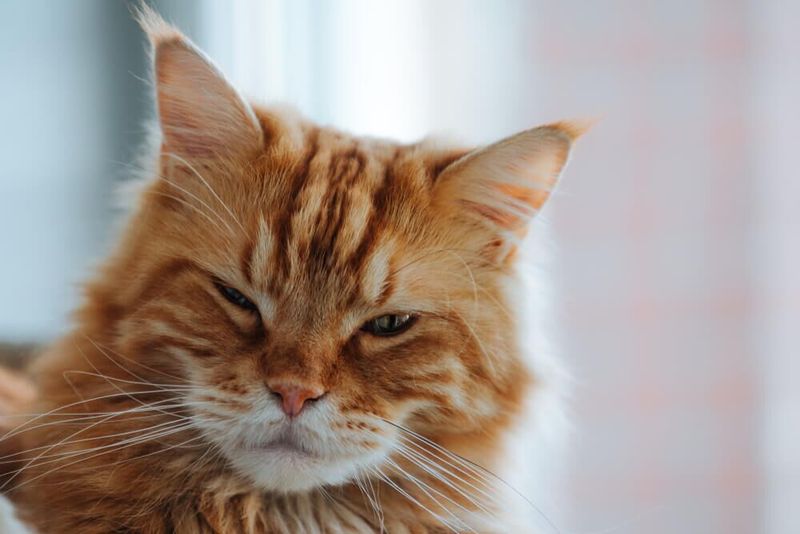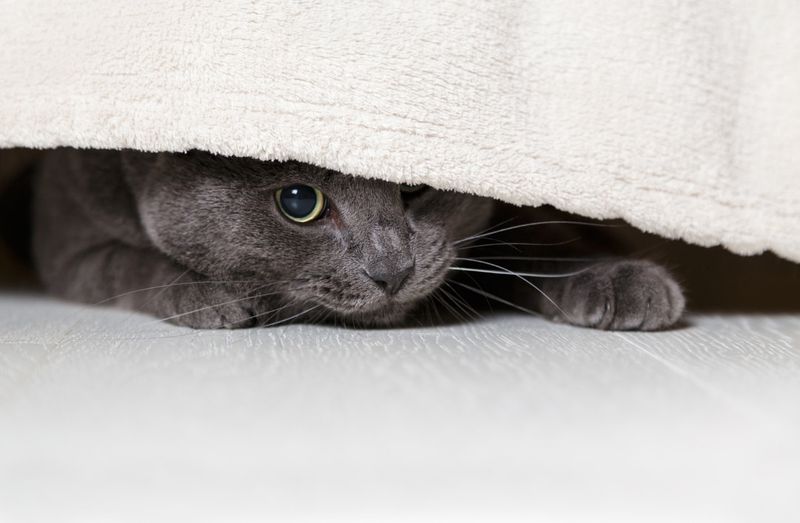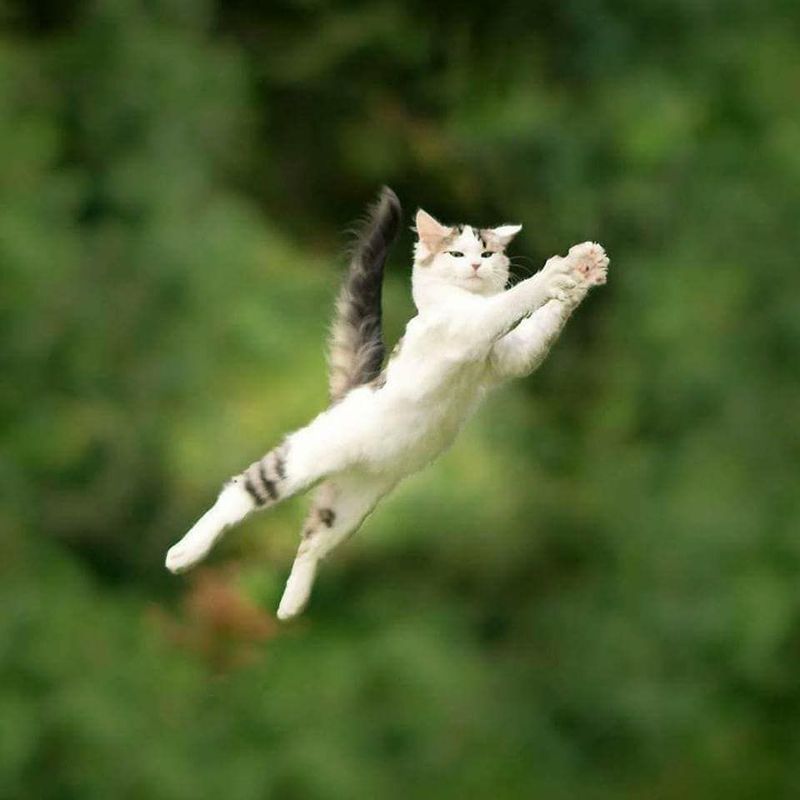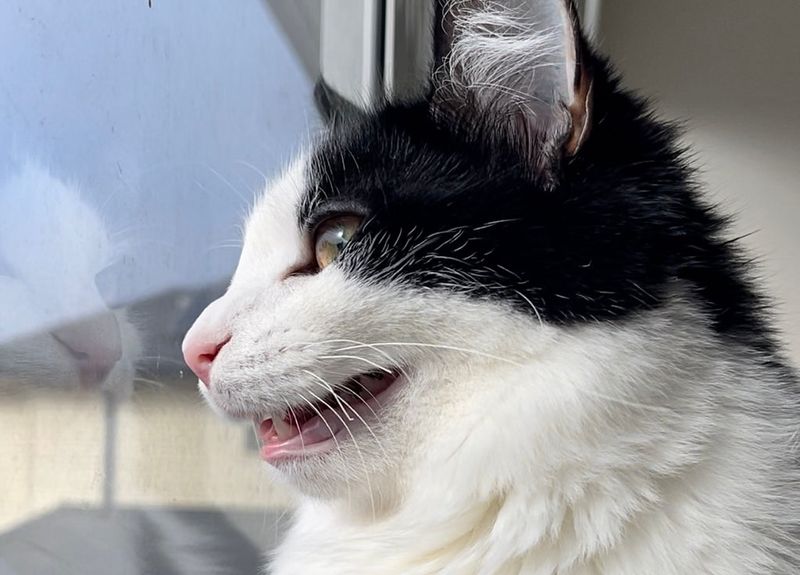📖 Table of Content:
Cats have long been admired for their grace, agility, and mysterious nature. Beneath that calm exterior, however, lies a sharp and adaptable mind. What may seem like random or quirky actions often have a surprising purpose.
Many feline behaviors are rooted in instinct, but others reveal a capacity for learning and reasoning. From opening doors to manipulating toys, cats often display problem-solving skills that hint at high intelligence. Their actions can reflect awareness, memory, and even creativity.
Over the centuries, cats have developed the ability to read their environment and respond in clever ways. Whether it’s finding hidden treats or communicating with subtle body language, their intelligence goes far beyond instinct. Recognizing these traits can lead to a deeper appreciation of just how remarkable these animals truly are.
1. Knocking Things Off Shelves
Your cat isn’t just being annoying when they push your favorite mug off the counter. They’re actually conducting physics experiments! Cats are natural scientists, testing how objects move, fall, and break. This behavior helps them understand cause and effect relationships in their environment. In the wild, this skill would help them test if prey is truly dead or if strange objects are dangerous.
Next time your cat sends something crashing to the floor, remember they’re flexing their scientific mind—though you might still want to move your breakables to safer spots!
2. Staring at ‘Nothing’
Those moments when your cat seems fixated on an empty wall aren’t signs of a haunted house. Cats can detect ultraviolet light and hear frequencies up to 64,000 Hz—far beyond human capabilities. What looks like empty space to you might be a fascinating light pattern or the sound of mice in the walls.
Their extraordinary senses allow them to monitor their surroundings with incredible precision. Rather than hallucinating, your cat is using their supercharged senses to track things completely invisible to you. Pretty impressive for an animal that also spends 15 hours a day napping!
3. Sleeping in Boxes and Tight Spaces
The internet loves cats in boxes, but this quirky habit is actually a brilliant survival strategy. Small, enclosed spaces provide security from predators and help conserve body heat—a critical advantage for wild cats. Boxes also reduce stress by creating boundaries in a cat’s territory.
Studies show that shelter cats with boxes adapt faster and show fewer stress behaviors than those without them. Your cat’s box obsession connects to ancient instincts that kept their ancestors alive in the wild. That cardboard Amazon box isn’t just a toy—it’s a stress-reducing, temperature-regulating security system!
4. Slow Blinking at You
That dreamy, slow blink your cat gives you isn’t just adorable—it’s sophisticated communication! Cat behaviorists call this the “cat kiss” or “slow blink” and it signals trust and affection. In the wild, closing eyes around another creature shows extreme vulnerability. When your cat slow blinks at you, they’re essentially saying, “I feel safe enough to let my guard down around you.”
Try returning this gesture by slowly closing and opening your eyes when looking at your cat. You’re speaking their language and strengthening your bond through a unique form of non-verbal communication!
5. Bringing You ‘Gifts’
Finding dead mice or birds on your doorstep might seem gross, but your cat is actually showing remarkable teaching skills. Mother cats in the wild teach their kittens to hunt by bringing back prey in various states—from dead to alive and injured. When your cat brings you “presents,” they’re treating you as family who needs hunting lessons.
This behavior demonstrates their problem-solving abilities and social intelligence. While not the most welcome gift, it shows your cat’s complex understanding of social relationships and their desire to contribute to the family group—even if their methods are a bit misguided!
6. Kneading with Their Paws
That rhythmic pushing of paws against soft surfaces has its roots in kittenhood. Kittens knead their mother’s belly to stimulate milk flow, but adult cats continue this behavior for multiple smart reasons. Kneading helps cats mark territory through scent glands in their paws.
It also serves as a self-soothing technique that releases feel-good endorphins when they’re stressed or need comfort. Additionally, wild cats knead grass and leaves to create soft sleeping spots. Your cat’s kneading shows their ability to adapt infantile behaviors for adult purposes—a sign of behavioral flexibility and emotional intelligence!
7. Hiding When Sick
Cats instinctively mask illness and pain—not because they’re stubborn, but because it’s evolutionary genius. In the wild, showing weakness makes an animal vulnerable to predators and competitors. Your cat’s tendency to hide when sick demonstrates their innate survival instinct and self-preservation skills.
They’ll often seek out quiet, dark places where they feel safe and can heal undisturbed. This behavior requires self-awareness and risk assessment. While challenging for pet owners trying to monitor health, it shows your cat’s ability to evaluate their condition and take appropriate action—a sophisticated survival strategy!
8. Precise Jumping and Spatial Awareness
Watch your cat calculate a jump to a high shelf—they rarely miss! Cats possess extraordinary spatial intelligence, able to precisely judge distances, heights, and landing spots with minimal visual information. Their whiskers act as sophisticated measuring tools, determining if a space is wide enough for their body.
This spatial awareness extends to their remarkable ability to land on their feet when falling, a reflex called the “righting response.” Your cat’s jumping prowess isn’t just showing off—it’s a complex calculation involving physics, proprioception (body awareness), and visual processing that would challenge even advanced robots!
9. Chattering at Birds Through Windows
That strange chattering sound your cat makes while watching birds isn’t random—it’s a fascinating combination of predatory excitement and frustration. Some experts believe it mimics the “killing bite” cats use in the wild. Others suggest it might be an attempt to mimic prey sounds to lure birds closer.
This behavior demonstrates your cat’s hunting instincts and their ability to process complex emotions like frustration when they can’t reach desired prey. The fact that cats develop this specialized vocalization specifically for hunting scenarios shows their ability to create context-specific communication—a marker of advanced cognitive functioning!
